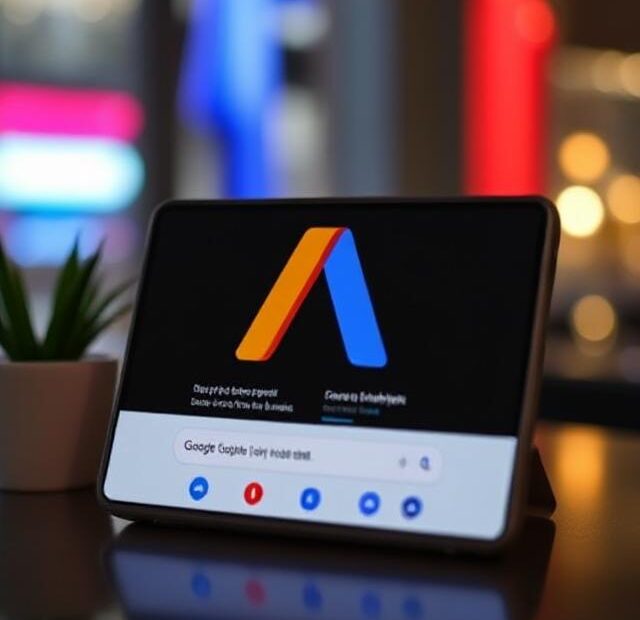Google Ads is one of the most powerful tools for driving targeted traffic to your website. Whether you run an e-commerce store, a local business, or a personal blog, paid ads can help you reach potential customers quickly. But for beginners, the platform can feel overwhelming.
In this beginner’s guide to launching a Google Ads campaign, we’ll break down the process step-by-step so you can start advertising with confidence.
1. Understand How Google Ads Works
Google Ads operates on a pay-per-click (PPC) model, meaning you pay only when someone clicks your ad. Your ads can appear on Google search results, YouTube, Gmail, and partner websites. Placement depends on your bid amount, ad quality, and relevance to the user’s search query.
The key to success is balancing a competitive bid with a high-quality ad that matches user intent.
2. Set Clear Goals
Before launching your campaign, define what you want to achieve. Common objectives include:
-
Driving website traffic
-
Generating leads
-
Increasing online sales
-
Boosting brand awareness
Clear goals help you choose the right campaign type and measure success effectively. For example, if you want more sales, you might focus on Search Campaigns targeting high-intent keywords.
3. Choose the Right Campaign Type
Google Ads offers several campaign types:
-
Search Campaigns – Text ads that appear in Google search results
-
Display Campaigns – Visual ads on Google’s Display Network
-
Shopping Campaigns – Product-based ads for e-commerce stores
-
Video Campaigns – Ads on YouTube
-
App Campaigns – Promotes mobile app installs and engagement
For most beginners, Search Campaigns are the best starting point because they target users actively looking for your products or services.
4. Do Keyword Research
Keyword research is the backbone of any successful Google Ads campaign. Use Google Keyword Planner or tools like SEMrush to find keywords your audience is searching for.
When researching, focus on:
-
Relevance – Choose keywords closely related to your offer
-
Search Volume – Target terms people search often
-
Competition & CPC – Balance cost with potential ROI
Consider using long-tail keywords like “affordable SEO services for small businesses” to reach a more targeted audience.
5. Create a Budget and Bidding Strategy
Decide how much you want to spend daily or monthly. Beginners often start small and scale up after seeing results.
Bidding strategies include:
-
Manual CPC – You control the max bid per click
-
Maximize Clicks – Google tries to get as many clicks as possible within your budget
-
Target CPA – Focus on conversions at a set cost-per-acquisition
-
Target ROAS – Optimize for return on ad spend
For your first campaign, Maximize Clicks or Manual CPC is often easiest to manage.
6. Write Compelling Ad Copy
Your ad needs to grab attention and encourage clicks. A typical search ad includes:
-
Headline – Clear and keyword-rich
-
Description – Highlights benefits and calls to action
-
Display URL – Shows your site or landing page
Example:
Headline: Affordable Web Design for Small Businesses
Description: Professional websites starting at $299. Get yours in 7 days. Call now!
Make sure your copy aligns with your keyword and user intent.
7. Design a High-Converting Landing Page
Sending users to your homepage isn’t always ideal. Instead, create a dedicated landing page that matches the ad’s promise.
Tips for a strong landing page:
-
Clear headline matching the ad copy
-
Benefits highlighted in bullet points
-
Strong call-to-action (e.g., “Get a Free Quote”)
-
Mobile-friendly design
-
Fast loading speed
8. Set Up Conversion Tracking
To measure success, you need to know which clicks turn into sales or leads. Google Ads allows you to set up conversion tracking by adding a small piece of code to your site or connecting your account with Google Analytics.
Tracking helps you identify the best-performing keywords, ads, and targeting strategies.
9. Launch and Monitor Your Campaign
Once your ad is live, monitor it closely—especially in the first few days. Check metrics like:
-
Click-through rate (CTR)
-
Conversion rate (CVR)
-
Cost-per-click (CPC)
-
Quality Score
Pause keywords that don’t perform and allocate more budget to those that do.
10. Optimize for Better Results
Google Ads success is about constant optimization. Test different headlines, descriptions, landing pages, and keywords. This process, known as A/B testing, helps you improve performance over time.
Final Thoughts
Launching your first Google Ads campaign can seem intimidating, but with the right strategy, it’s a powerful way to reach potential customers quickly. By following this beginner’s guide to launching a Google Ads campaign, you’ll be able to set clear goals, choose the right keywords, create compelling ads, and monitor your performance for maximum ROI.
Remember: start small, track everything, and refine your approach for continuous improvement.
Also, you can learn more about Amazon Ad Mistakes here.
